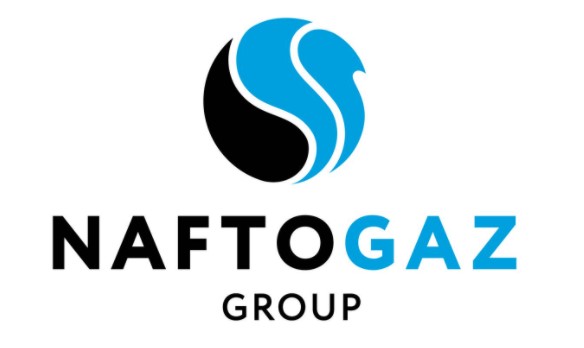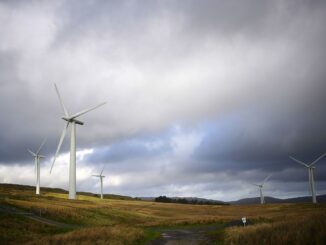
Many nations that intend to become self-sufficient with regard to their hydrocarbon needs oftentimes lowball the terms and conditions they offer to prospective investors. This is fairly logical, high-risk spots must be attractive enough and afterwards, following the first commercial discovery and the first project commissioning, the state can think of ways of increasing the tax burden and finding new methods of hiking revenues. As banal and trite this might seem, there are cases when this sequence breaks down and the phase of opening degenerates into a presumptuous display of incompetence. Ukraine now is apparently flirting with the idea of creating a national oil and gas champion in the form of Naftogaz, at the same time weakening competition and interest in its upstream sector. The Crimea used to be Ukraine’s top hydrocarbon prospect – not only was it the pioneering spot for solar energy but its offshore waters were topping the list of its largest gas fields. With Crimea de facto detached from Ukraine following all the tumultuous events of 2014, Ukraine’s Energy Ministry found itself confronted with a challenging task of ramping up domestic production so as to minimize imports from elsewhere. Although Ukraine has officially stopped the purchase of natural gas from Russia’s Gazprom in December 2015, most of its gas imports are of Russian origin in what has been traditionally labeled as “reverse gas flows” from Poland, Slovakia and Hungary. Therefore, the objective of importing as little gas as possible conveyed also a political message – Kiev understands the reputational corollaries of its imports and remains intent on bringing it to a halt at some point.
Ukraine’s 2019 upstream licensing round was assumed to be the breakthrough that would finally kickstart offshore drilling, yet nothing came out of it. A combination of several factors – a misplaced hurry with its organization, persisting concerns about Ukraine’s political stability, fears of potential corruption during the licensing process itself – have kept Western majors away and have led to the Dolphin Block, the crown jewel of the licensing round, being allocated to a completely unknown company called Trident Acquisitions (linked to a Russian political dissident). Caught wrong-footed by such a turn of events the Ukrainian government cancelled the results of the licensing round 4 months after its closure.
Then-Prime Minister has succinctly summarized the reasons for Kiev’s dissatisfaction by stating that the licensing round was “neither representative nor competitive enough”. The 9500-square km Dolphin Block abuts the already producing Golitsynskoye and Shtormovoye fields and comprises 3 already discovered prospects (Zonalna, Mirna and Charivna) the recoverable reserves of which reportedly amount to 48.3 million tons of oil equivalent. Although occasionally media reports claim that Dolphin might be oil-rich, the likelihood is that it will be similar to its neighbors and be a predominantly gas/condensate field. Be as it may, the 2019 cancellation of the offshore licensing round has rekindled hopes in Kiev that perhaps Western majors might be interested in taking over Dolphin.
It took less than a year for another government U-turn on the issue – in December 2020 it has decided to grant the Dolphin Block to Naftogaz, the national oil and gas company. This was done without recourse to an open tendering process, i.e. in stark contrast to the government’s goal to make the licensing as competitive as possible. The E&P rights on Dolphin were provided for a period of 30 years and Ukraine’s Cabinet of Ministers even amended its regulatory base so as to settle concerns around the legality of such a move. Naftogaz vowed to carry out seismic surveys on the block (the last time it was appraised by means of 2D seismic surveying was in 2005) and stated that it would be keen to bring in international partners.
For Naftogaz, adding Dolphin to its portfolio is a solid reputational move, especially considering that it still wants to go ahead with its IPO once Ukraine’s economy shakes off the coronavirus-triggered dust clears. Moreover, it has managed to avoid paying the licence’s bidding fee (to the detriment of Ukraine’s revenues) which might either be qualified as Kiev providing preferential treatment to Naftogaz or as the Ukrainian government realistically assessing its odds of attracting anyone major enough. This being said, the Ukrainian NOC is most assuredly honest in its wish to attract foreign investors as it lacks the deepwater know-how to develop and commercialize Dolphin, were its reserves be found commercial.
In another illustrative display of how Ukraine’s upstream will look like in the future, Naftogaz was allowed to purchase Nadra Yuzivska, the company holding exploration rights on the country’s largest shale gas prospect – the Yuzovskoye play (or Yuzivska in its Ukrainian transliteration). Yuzovskoye is located along Ukraine’s massive coal deposits in the eastern regions of Donetsk and Kharkov, with some parts of the 7 886 km2 dangerously close to the self-proclaimed eastern People’s Republics. The shale play had a very promising start when Shell signed a production-sharing agreement in 2013, at that point the aggregate reserve tally was assessed at 4 TCm. The happiness, however, only lasted 2 years as in 2015 Shell has left the project, stripping it of all shale-relevant expertise.
Naftogaz itself has had minimal exposure to shale plays, therefore it will be compelled to seek foreign companies to join Yuzovskoye though the proximity of the front line will render its quest rather arduous. Thus, Naftogaz now operates 2 of Ukraine’s most promising acreages but in both cases it would need a helping hand, preferably a Western major that could facilitate the complex technological solutions that the Ukrainian NOC all by itself might get bogged down. Concurrently to Naftogaz’s asset consolidation, the Canadian firm Vermillion Energy has reportedly dropped the idea of signing a production-sharing deal with Ukraine amid profitability concerns and red tape, signaling that the exodus of foreign companies and the increasing concentration of Ukrainian companies has been a genuine trend.
By Viktor Katona for Oilprice.com




1 Trackback / Pingback
Comments are closed.